We wanted our trip to be as much off the beaten path as feasible, and to try to soak up Italy instead of tourist Italy (which I term Disney Italy - been there, done that). After using our delightful tenuta outside Todi as our base for a few days, we headed up over the hills and through the vineyards towards Bevagna in the Valle Umbra because Mrs. BD knew, during her planning, that I wanted some time based in a little old, non-touristy town to walk around in.
On the way there, we stopped by the hilltop walled village Montefalco, where we did the most shopping on our entire trip: She could not resist the famous tessuto artistico - the textiles of Umbria - tablecloths and linens - and I could not resist their heavy Umbrian olive oils and wines. Sagrantino di Montefalco, in particular:
Montefalco is know almost exclusively for its obscure and powerful wine, know as Sagrantino. Sagrantino is a dark bruiting red wine made from the indigenous Sangratino grape that is grown only around Montefalco. For centuries it was produced as a passito, a fortified dessert wine, but today Sagrantino reaches its pinnacle as a earthy and dry table wine.
Well, also known for its Umbrian textiles. She bought a yellow tablecloth with some pattern in it or whatever, taking well over 1/2 hour to do so while I explored around. (It is against my religion to enter clothing stores, shoe stores, or textile shops).
This is a pic of a pic on the wall in one of Montefalco's many vino and olio shops.
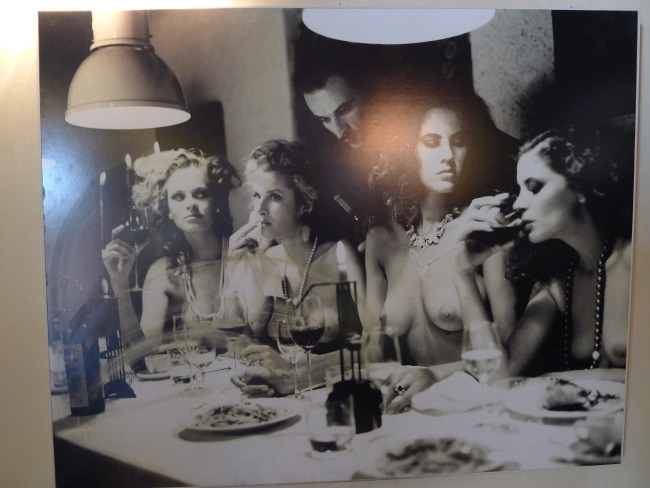
Lots of pics below the fold -
Main gate of Montefalco
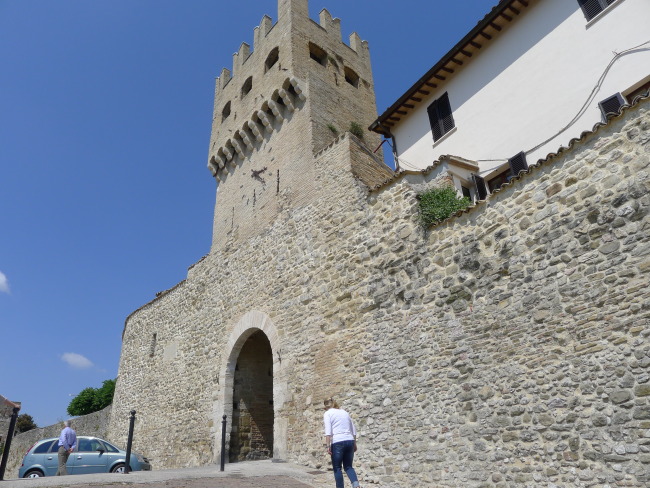
Main drag of the hilltop town
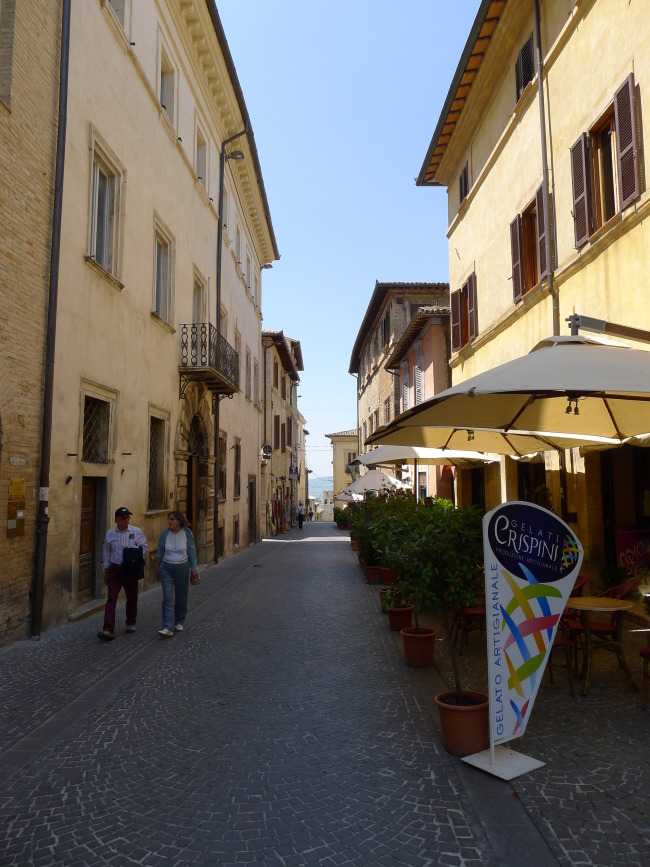
Town square on top of the hill
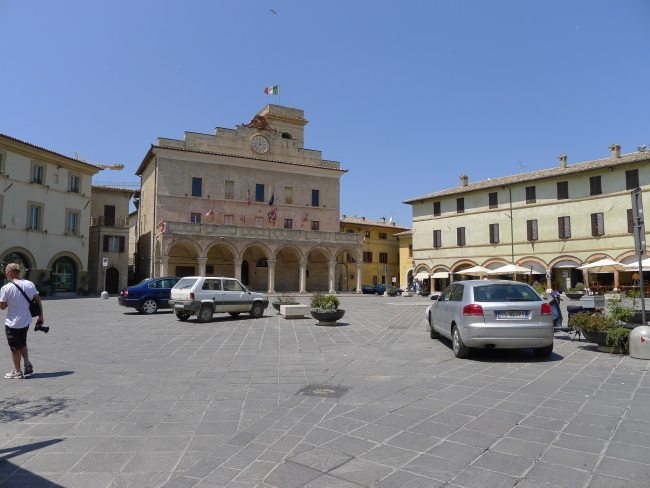
Restaurant sign
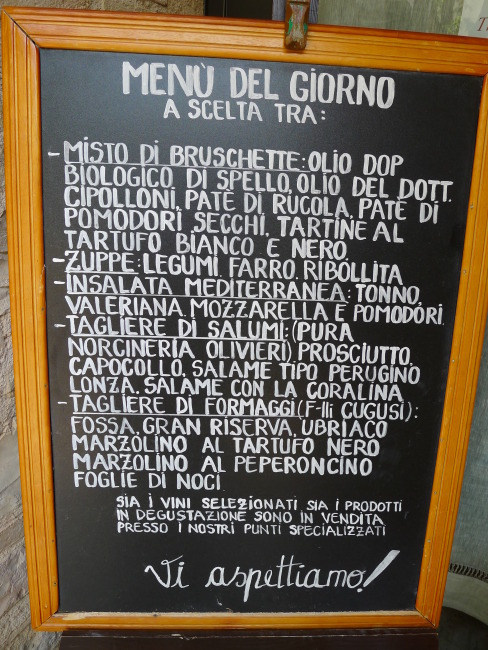
Side street
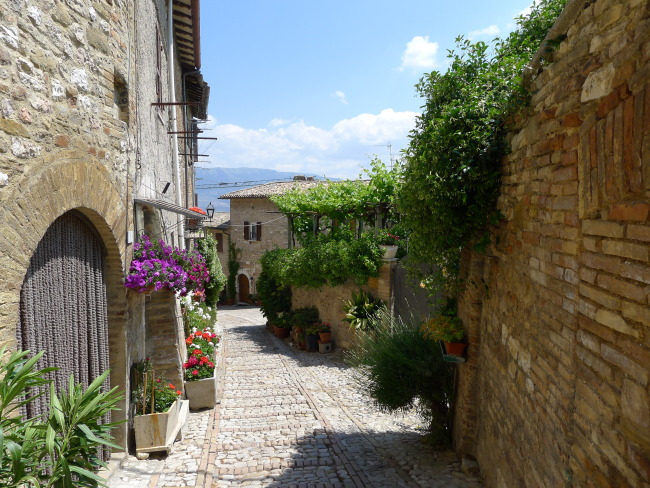
Nice lunch at probably the best restaurant in town, Coccorone.

Wood fire where they cook their Tuscan steaks. I can recommend cooking meat over wood fire instead of charcoal. My Dad always did, when I was young. Later, he took up charcoal as a convenience.

For lunch, we shared a primi of Saffron Stringozzi with eggplant and fresh tomato, then Rabbit with wine sauce with grilled artichoke, sage, rosemary and fennell in the sauce. Both were amazingly tasty, and the Italians are always very good with rabbit.
Reminder that in Italy they don't put sauce on pasta - they toss the pasta in the sauce in the saucepan -
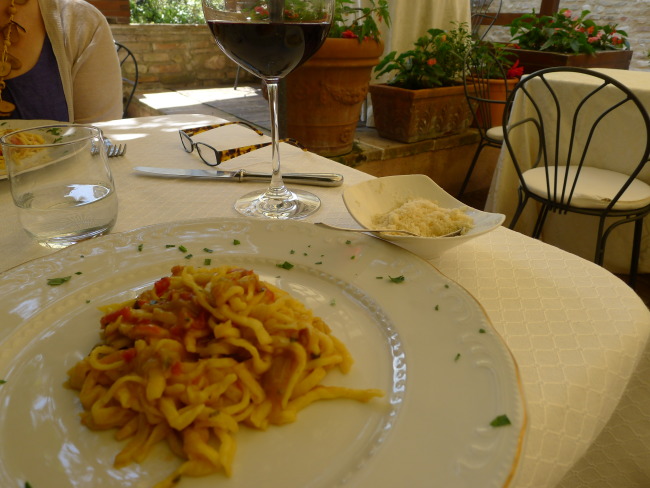
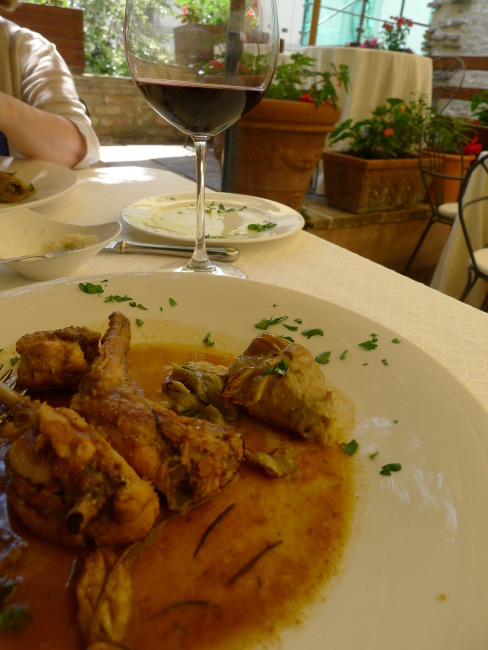
View from the town across the Valle Umbra, looking towards the foothills of the Appennines
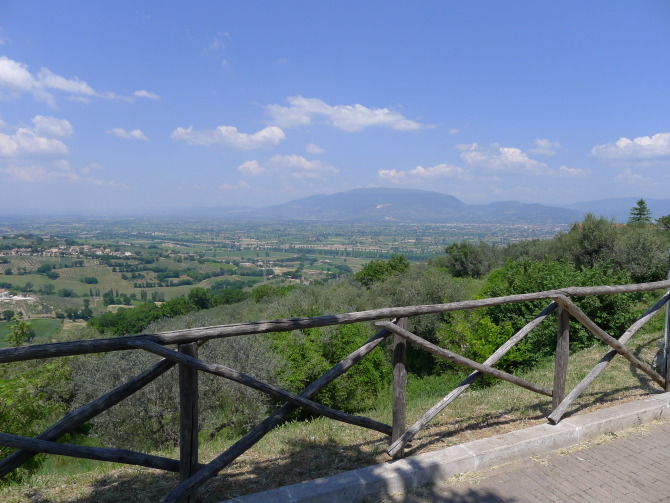
The oil and wine prices seemed a little high to me inside the walls, so I tried a little shop just outside the walls. Found some stringozzi zeffirano there, too. Not easy to find. That lady did not mind being in the pic:
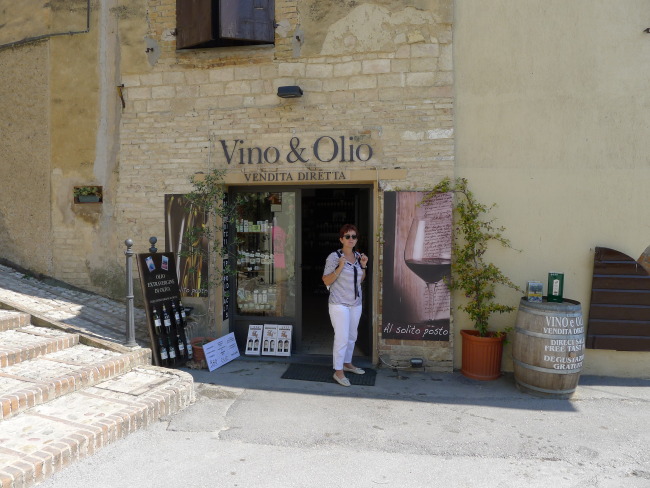
Moving onwards down the road, it was easy to find our hotel in the village of Bevagna, just inside the walls of the town: L'Orto delli Angeli.
Here's the simple entrance to their complex - if you look closely, you can see a recycled carved Roman lintel (saw a lot of that in Bevegna, including in church entries). The building with the bell tower is an active Benedictine monastery -
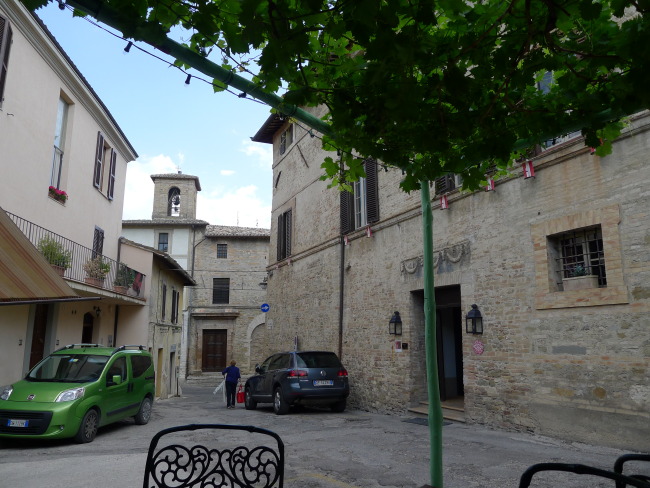
"L'Orto ranks as one of my favorite hotels in the world." - Nicholas Lamp, New York Times
Nice place, probably over-priced. Nothing fancy about it at all, and nobody goes to Bevagna. We were there because we wanted to be in an Italian town, not a tourist town. They have a dramatic and highly expensive dinner-only restaurant situated in the ancient Roman theater adjacent to the hotel, but we passed - not only for the expense, but because we like Italian neighborhood joints and Italian home cookin, as it were.
It's a 15th C palazzo converted into a hotel, and still owned by the family which built it (they reserve part of the palazzo for their occasional living quarters). Fun to see what the inside of a 15th C Italian palazzo looked like. We were the only Americans. Others were all Brits. Brits love exploring Italy.
Thought our readers might enjoy a peek at the architecture inside of a modest residential palazzo of that era - marble floors, cool ceilings, cool doors to close for every room, no elevator - simple elegance -
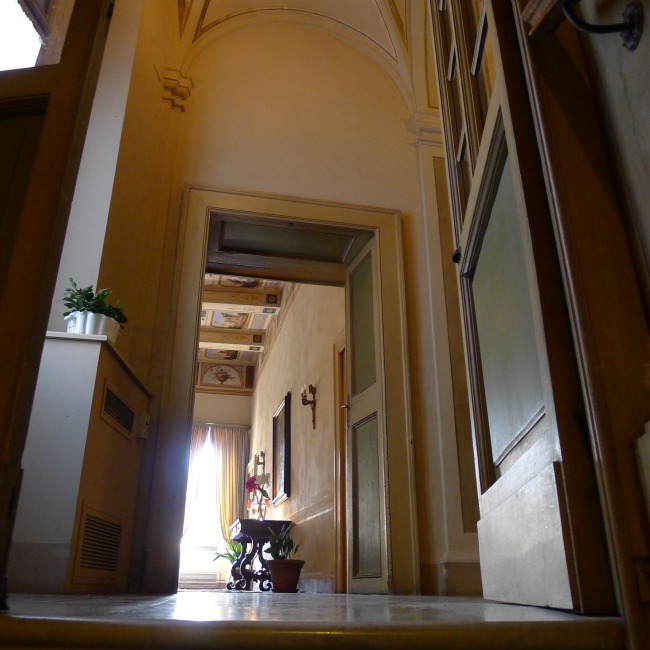
Sitting area for our 3rd floor room - cool ceiling, but one would never sit inside in May in Italy -
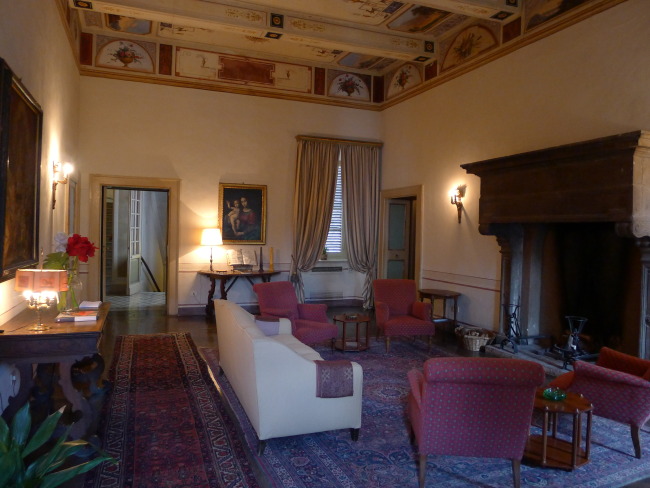
Hallway -
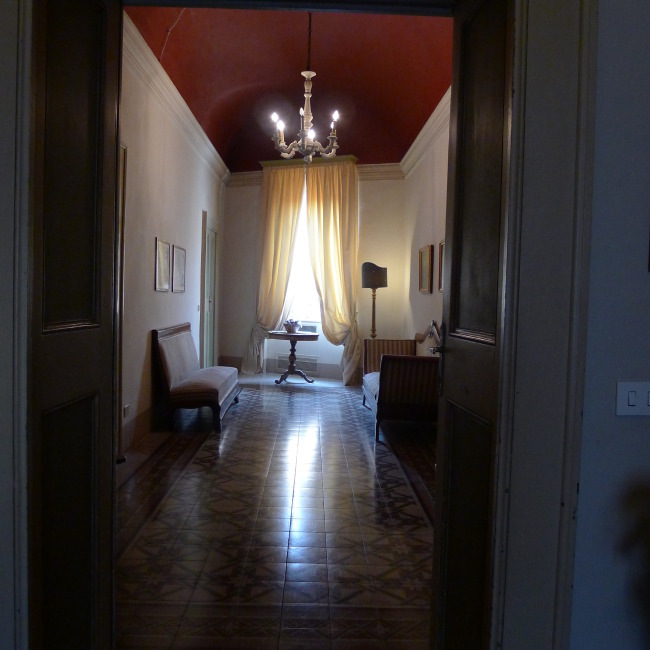
Our bedroom -
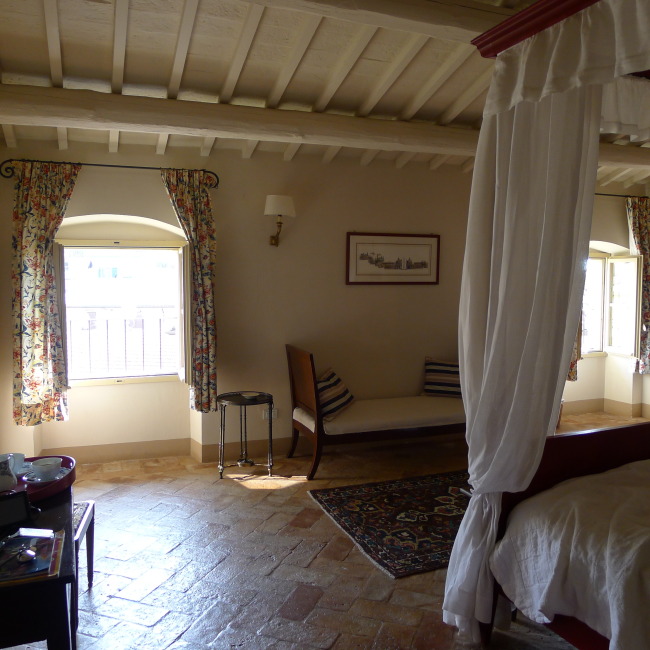
View from our windows is the hotel's rooftop rose garden. You can detect, in the curve of the buildings, the old foundations of the Roman amphitheater beneath.
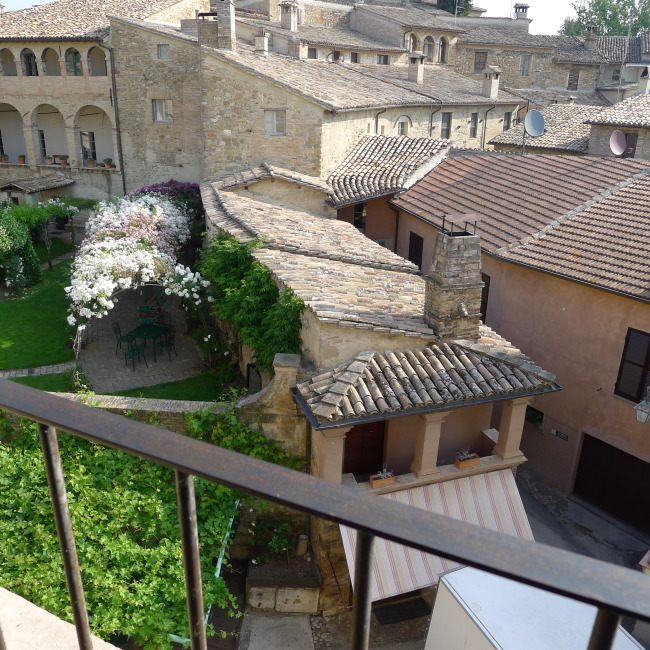
There's an active Benedictine monastery right across from the hotel. They ring their bells every hour and half-hour, day and night.
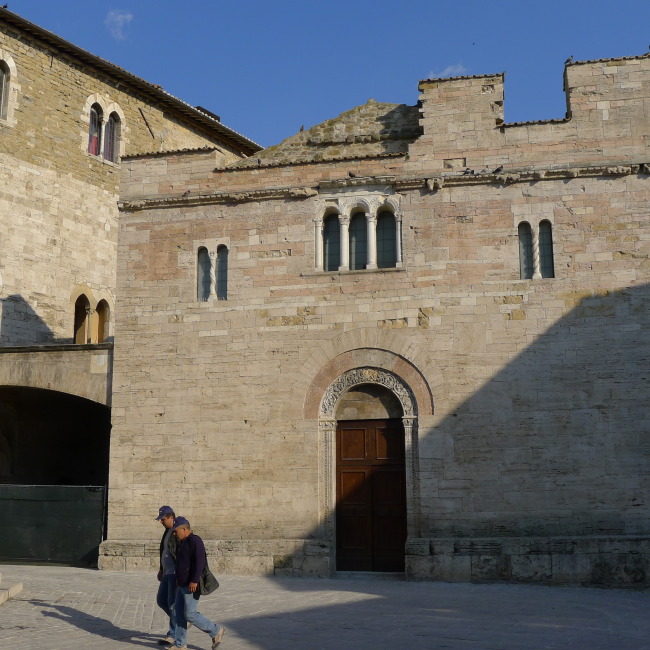
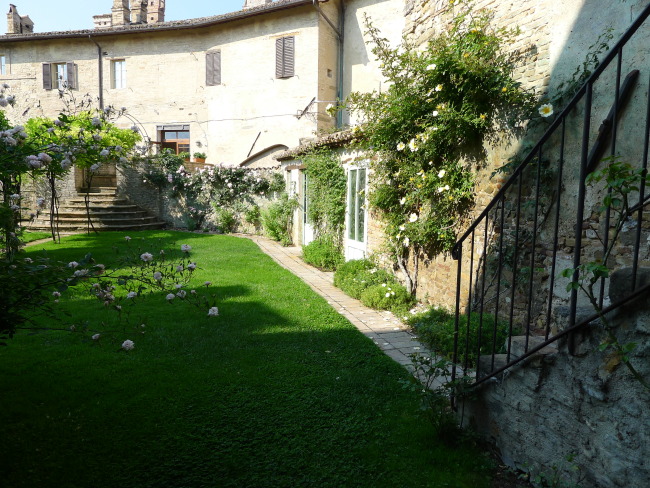
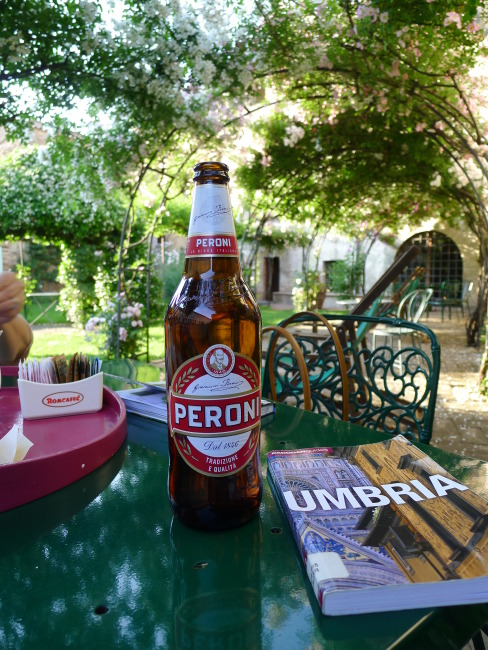
That's enough for now -

